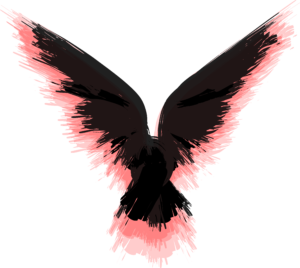What fuzzy critter that kids love to play with could tell you what the weather will be in the winter? What does the moon have to do with snow? What sunrise indicates incoming storms? What did the aftermath of an ice storm sound like? Find out on this episode.
There are many ways that people predicted weather long before modern radars and your friendly local weatherman. From the beginning of mankind, we have tried to guess what the weather would do, and in doing so, we picked up on patterns that helped us to understand what weather might happen and prepare. Today, I will share 5 of them.
1) The rhyme about the red sky.
I am going to go out on a limb here and say that the most well-known weather prediction is the old sailor rhyme. It goes, “Red at night sailor’s delight. Red in the morning, sailors take warning.” As far as I can tell, it was first recorded in history with shepherds, not sailors, but it has since changed the wording. In fact, in the Bible, there is even mention of what red skies mean in the book of Matthew. Matthew 16:2-3 to be precise.
However, the point of the rhyme remains the same. The science behind this is that when the sunlight has to pass through more clouds, the sunset or sunrise looks red. Now, they also say that because more clouds are not a guarantee of bad weather since the clouds could be headed in any direction (because of the wind), so, it has to be wrong. But the rhyme says take warning. As in, be on watch. It didn’t scream, DANGER! DANGER! So I will let you make your own mind up, but whatever you decide, it is likely a well-known saying.
2) Wooly Bear Caterpillars
These are caterpillars that live across Canada, the United States, and Mexico. They have two color bands: black and reddish-brown. Both ends will be black, and the reddish-brown will be in the middle. And yes, they are cute and fuzzy looking but are not as soft as they look. Kids love to play with them. They are believed to be able to predict what the winter will be like: warm and mild, cold and wet. Now, I went for a search of this on the internet, and it was crazy! Everyone talked about what each band meant. No one could agree on what was what. So, I will tell you what I grew up with, and if you want to know what others say, I will leave the links in the show notes.
My Native American grandmother told me that the more black you see on them, the colder and wetter a winter will be. The more brown you see, the warmer it will be. Now, you would have to see them every year to know what was a lot and what was a little since they are only one and a half inches long. But to give you a rough idea, think of it in halves. If approximately half or more of its body length were brown, then it would be mild. If approximately half or more of its body length is black, it will be cold, and you should expect snow.
Now, I’m not going to claim to be old, (*Cough, cough, like my dad. Cough, cough.*) but I will say that I have always found this way to hold true. In fact, one year, I found the wooly bears to be totally black. I had never seen that before. That was also the year we had an ice storm with 12 inches of ice overnight, and some of us spent months without power. I still remember listening to the trees break under the weight and slide down the hill, crashing into more trees and having an avalanche effect. It was loud and sounded like a war movie but felt more like a horror movie. Our trees were never the same after that.
3) Persimmons
Persimmon trees can be found throughout most of the world, with China being the largest persimmon producer. The persimmon is often labeled a nut but is technically a fruit. Who knew? The fruit this tree grows is said to be able to predict the weather for the coming winter in the area where it grows. When the fruit is cut in half, and inside is one of three shapes that is a white color: a fork, a spoon, or a knife.
The fork should split in two at the top of the shape. If the shape looks like this, it is said to be a mild winter. The spoon looks like a teardrop that is fat at the bottom. If it is a spoon, it is said there will be so much snow you will need to shovel it. The knife looks like an oval with a point at the top. If it is a knife, it is said that it will be bitterly cold with cutting winds.
I know people who 100% believe this and treat it like the gospel, making sure to check every year and plan for winter accordingly. I know others who do not believe it at all. I have not done this before and don’t really know which side to fall on for this one.
4) If it thunders in December, it will snow in May.
This is a saying my Native American grandmother used to tell me. If it was storming so much you heard thunder in December, it would snow in May. This is something I have watched over the years. I’ve only had about a dozen years where I heard thunder in December, but I can tell you that while we didn’t always get snow in May, we did get very late snows and even later frosts. This affected our planting season for the garden.
Remember, this one is very likely localized to Tornado Alley, and maybe not even all of it. Many places and tribes have weather predictions that do not work in other places. This is something to think about for the specific region, or something that could change if they move locations.
5) Ring around the moon
Moon rings can also be called lunar rings, storm rings, and a halo. A ring around the moon is most likely to happen in winter, although it can happen at any time of year. These rings are normally bright and very pretty. They happen when light reflects off ice crystals. In case you haven’t guessed what that means, it means snow is coming within 24 hours. It can also mean rain is coming if it happens outside of wintertime.
Fun Fact: Did you know that according to the Farmer’s Almanac, lunar halos are fairly common? Now you do.
What could possibly go wrong?
Likely to go wrong: Your characters could argue with another character over whether a wooly bear caterpillar or even a persimmon fruit can predict the winter weather.
Likely to go wrong: Your character is given so many contradicting ideas of what weather predictions are true and what is not that they do not know what to believe. This could lead to hurt feelings if things were taken out of context.
Likely to go wrong: Your character could be told the red at night sailor’s delight rhyme, but they are color blind, making this rhyme not very useful to them.
Possible to go wrong: Your character cannot see a ring around the moon because there are too many clouds in the way.
Possible to go wrong: Your character was looking at the persimmons and could not tell the shapes apart. This is a skill that can take a little time to learn.
Unlikely to go wrong: Your character moves, and the weather sayings that were true where they lived before are no longer true where they currently live.
Unlikely to go wrong: Your character misreads the persimmon nut and plans for a mild winter, but the winter turns out to be cold and harsh.
Improbable but technically in the realm of possibilities; Your character is new to sailing, and when they see a red sky, they franticly sound the alarm to all the others that a horrible storm is imminent. The whole crew could laugh at them. It would be even worse if your character was right and no one believed them.
Helpful links to learn more:
Read at Night:
Lunar ring:
https://www.space.com/moon-halo
Wooly bears:
https://www.weather.gov/arx/woollybear#:~:text=Woolly%20Bear%20Folklore%3A,severe%20the%20winter%20will%20be https://www.adirondackalmanack.com/2021/12/woolly-bears-mountain-winter-forecast.html
Persimmons:




